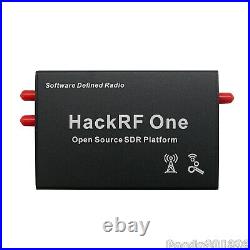

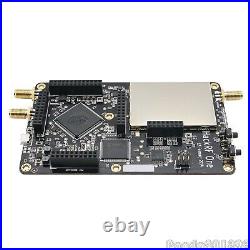
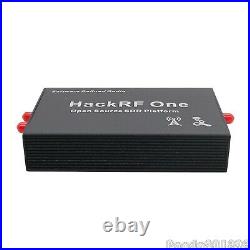

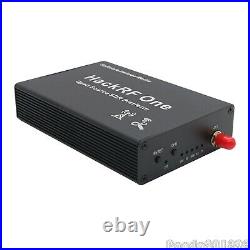
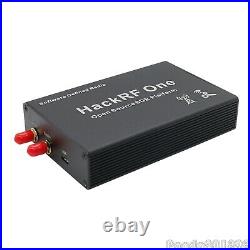
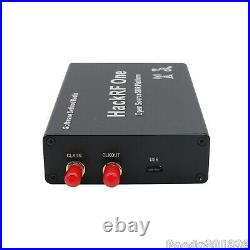
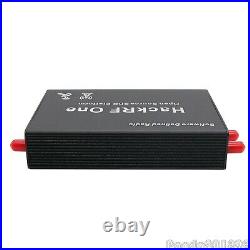

1MHz-6GHz HackRF One Open Source SDR Platform SDR Development Board + Aluminum Alloy Shell Taking the receiving process as an example, the flow after the signal enters from the antenna is as follows: · The RF switch determines whether to amplify via a 14dB amplifier · High-pass or low-pass filtering of the signal through the image suppression filter · The signal is mixed with RFFC5072 chip to 2.6GHz fixed intermediate frequency ·The latest firmware supports the option of variable IF · Intermediate frequency range 2.150GHz-2.750GHz · The signal is fed into the MAX2837 chip and mixed to the baseband to output a differential IQ signal · The MAX2837 chip can limit the bandwidth of the signal · MAX5864 chip digitizes the baseband signal and sends it to CPLD and single chip TODO FIXME · CPLD ·The LPC4320/4330 processor sends the sampled data to the computer via USB ·Put RFFC5072 and MAX2837 into the shield to protect them, prevent the interference of the outside world and other chips on the board, and try to prevent static electricity from puncturing some chips. Technical Parameters/Main Hardware: Basic Parameters: – Design frequency: 1MHz-6000MHz – Data bandwidth: 20MHz – Sampling accuracy ADC/DAC: 8bit – Sampling rate ADC/DAC: 20Mbps – Data/power supply interface: USB 2.0 – Open source level: all open source (software, hardware) RF Index: – Maximum transmit power: 10dBm (less than the minimum spurious transmit power of radio regulations) – Maximum received power: -5dBm (note: exceeding this value will burn the board) – 64QAM launch EVM: 1.5% – Complex sampling bandwidth: 20MHz Main Hardware: – RFFC5072: mixer provides 80MHz to 4200MHz local oscillator signal – MAX2837: 2.3GHz to 2.7GHz wireless broadband RF transceiver – MAX5864: ADC/DAC, 22MHz sampling accuracy 8bit – LPC4320/4330: For ARM Cortex M4 processor, main frequency 204MHz – Si5351B: I2C programmable arbitrary clock generator for CMOS, provides 40MHz and sampling clock by 800MHz frequency division – MGA-81563: 0.1-6GHz 3v 14dBm amplifier – SKY13317: 20MHz-6.0GHz RF single-pole three-throw (SP3T) switch – SKY13350: 0.01-6.0GHz RF single pole double-throw (SPDT) switch Package Included: – 1 x Set of HackRF One Note: Antenna is not included in the package. Usually it cost about 35USD-50USD. Thanks for your understanding. If you receive defective item, please kindly notify us within 14 days. The item “1MHz-6GHz HackRF One Open Source SDR Platform Board + Aluminum Alloy Shell tps” is in sale since Monday, June 15, 2020. This item is in the category “Handys & Kommunikation\Funktechnik\Amateurfunk\Amateurfunk-Sendeempfänger”. The seller is “panda201898″ and is located in Shenzhen. This item can be shipped worldwide.
- Frequenzband: 1MHz-6GHz
- Marke: Markenlos
- Herstellernummer: Nicht zutreffend
- Herstellergarantie: 1 Jahr
- Produktart: HackRF One
- Herstellungsland und -region: China
- Data bandwidth: 20MHz



